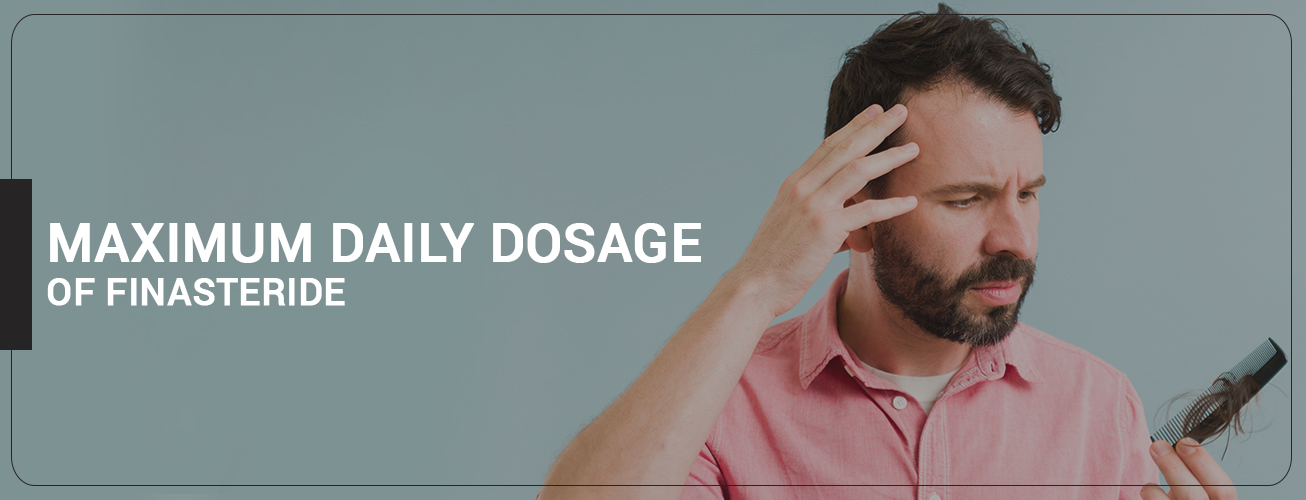
Male pattern baldness treatment always needs DHT blockers like finasteride or dutasteride. According to the study, one in every six men aged 18 to 29 is affected by moderate to extensive hair loss, and by age 40 to 49, half of all men are affected. The typical dosage of finasteride for hair loss is 1 mg per day. But the dose changes depending upon age, grade of baldness, amount of hair fall, and post-hair transplant surgery.
Hair loss from male pattern baldness occurs as a result of your genetics and exposure to DHT hormones. DHT is a byproduct of testosterone. DHT can attack your hair follicles through those having receptors linked to genetic linked genes, causing them to stop producing new hair.
Finasteride works by inhibiting an enzyme called 5α-reductase — an enzyme that’s responsible for converting testosterone into DHT. By doing this, finasteride causes DHT levels in your body to decrease, allowing your hair to avoid DHT-related damage.
Finasteride can reduce DHT levels in your body by up to 70%.
For example, a large-scale study carried out in Japan looked at the effects of finasteride over 10 years in men with male pattern baldness. More than 530 men used finasteride daily at a typical dosage of 1 mg, with their progress recorded via scalp photographs and a questionnaire.
Over the course of 10 years, 99.1 percent of the men that took part in the study experienced the prevention of male pattern baldness progression. Put simply, their hair loss stopped after they started using finasteride, with no worsening over a 10-year period.
91.55 percent of the men in the study experienced a slight, moderate or significant improvement in their hair growth over the course of the 10-year study period.
In other words, despite being genetically prone to male pattern baldness, almost all of the men that took part in the study saw their hair either stop falling out or grow back after they started to use finasteride at a 1 mg daily dosage.
Although they’re uncommon, finasteride can cause side effects. If you experience side effects at a 1 mg per day dosage, reducing your dosage of finasteride could make them less noticeable, or even cause them to disappear entirely. To avoid these side effects, one should exercise caution, especially if they are taking tablets for an extended period of time. Start with a 1 mg dose and gradually reduce to 0.5 mg per day after 6 months, when hair loss has stabilized, to maintain plasma levels of finasteride in the blood and adjust dosage as needed.
Research shows that finasteride still works relatively well as a male pattern baldness treatment at dosages below the 1 mg per day level.
For example, a study published in the Journal of the American Academy of Dermatology looked at the effects of finasteride on DHT at dosages of 0.01, 0.05, 0.2, and 1 mg per day over 42 days of treatment.
Although the study didn’t specifically measure hair loss, the researchers found that DHT levels in the skin of the scalp decreased by the following levels :
Read More :- Dutasteride Vs Finasteride
As you can see, even the relatively low dosages of finasteride (0.05 mg per day and 0.2 mg per day) caused a noticeable reduction in DHT levels.
Even after a transplant, DHT levels in the scalp are prevalent and may cause further damage to even transplanted hair. Depending upon the grade of baldness, we design the dosage of finasteride so that the result of hair transplant doesn’t deteriorate. We initially advise starting a dosage of finasteride of 1 mg before the hair transplant to stabilise hair loss and then plan for the hair transplant. Patients usually take finasteride for 6 months to a year, which then leads to thinning of implanted hairs and even existing hairs. So, patients should not discontinue medicines even after 1 year of their transplant, and we advise continuing at a dosage of 0.5 mg per day so that it maintains the result of transplanted hair.